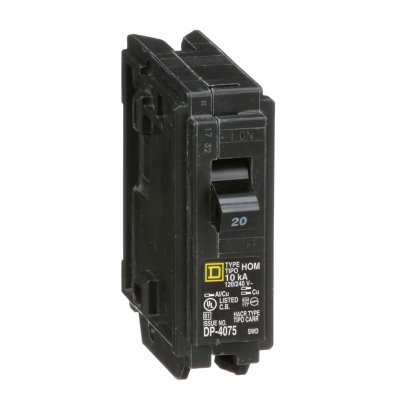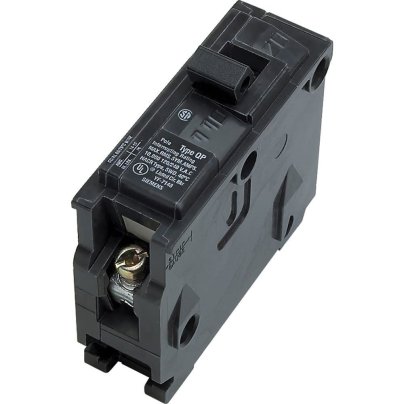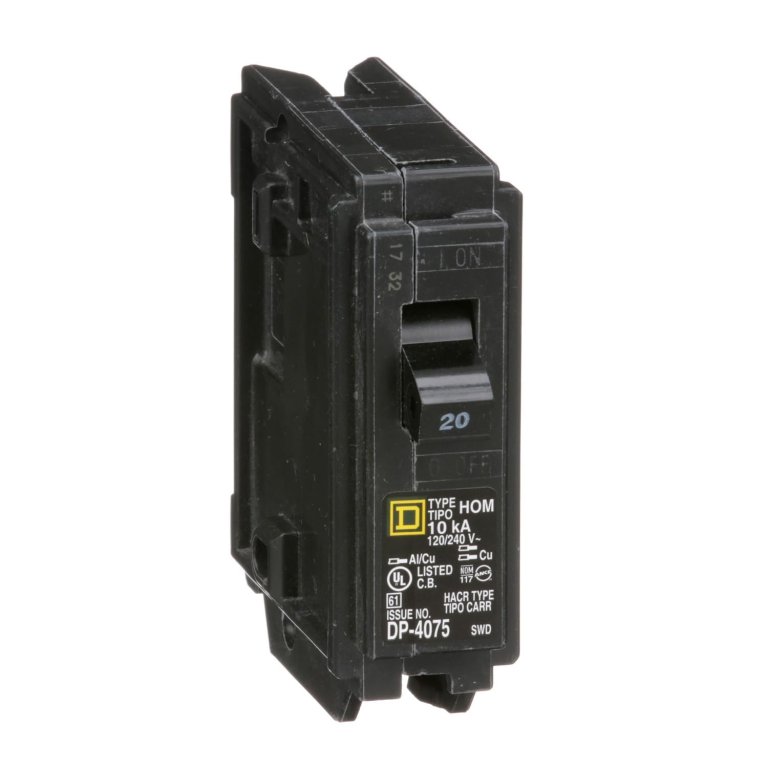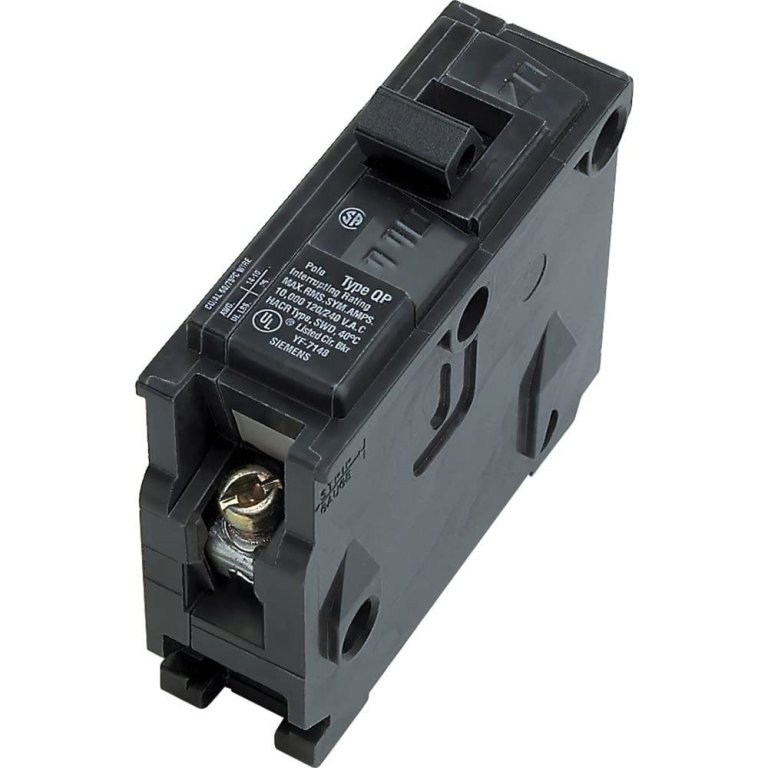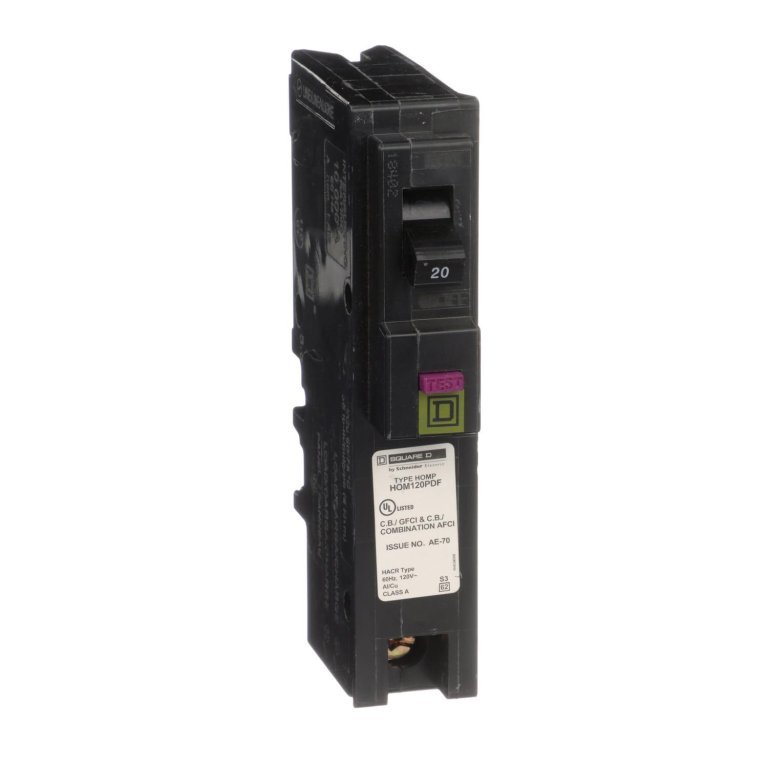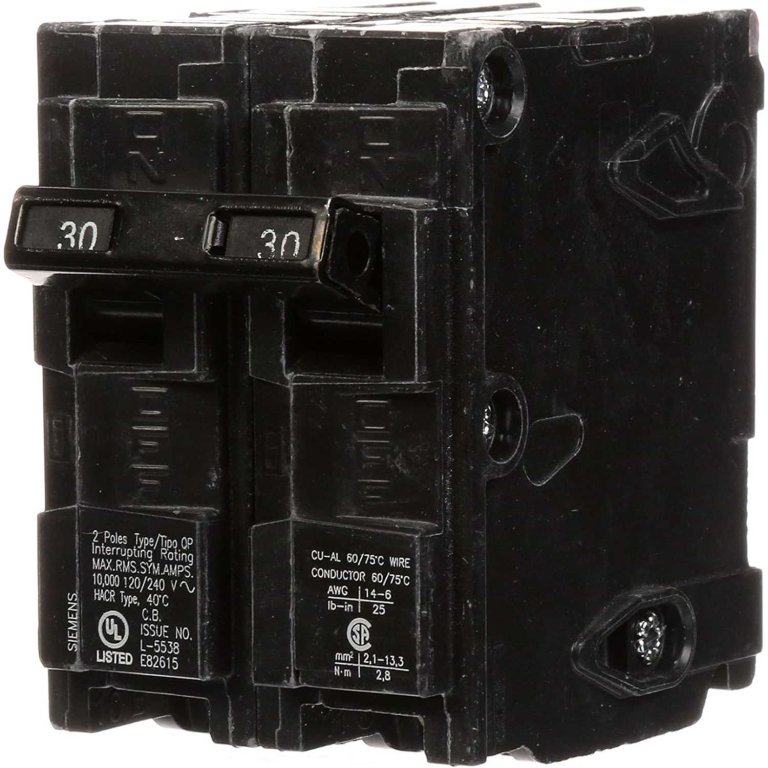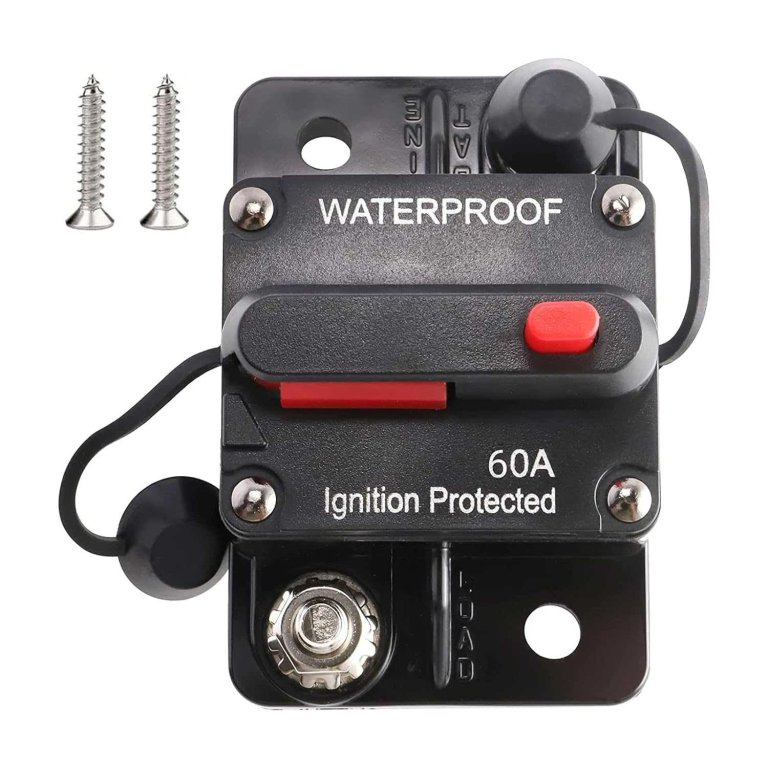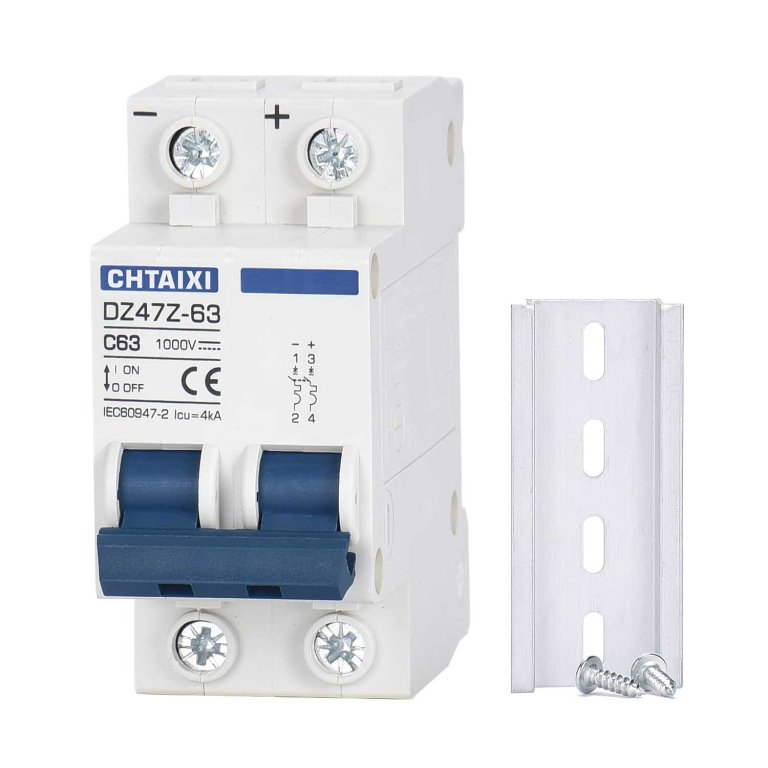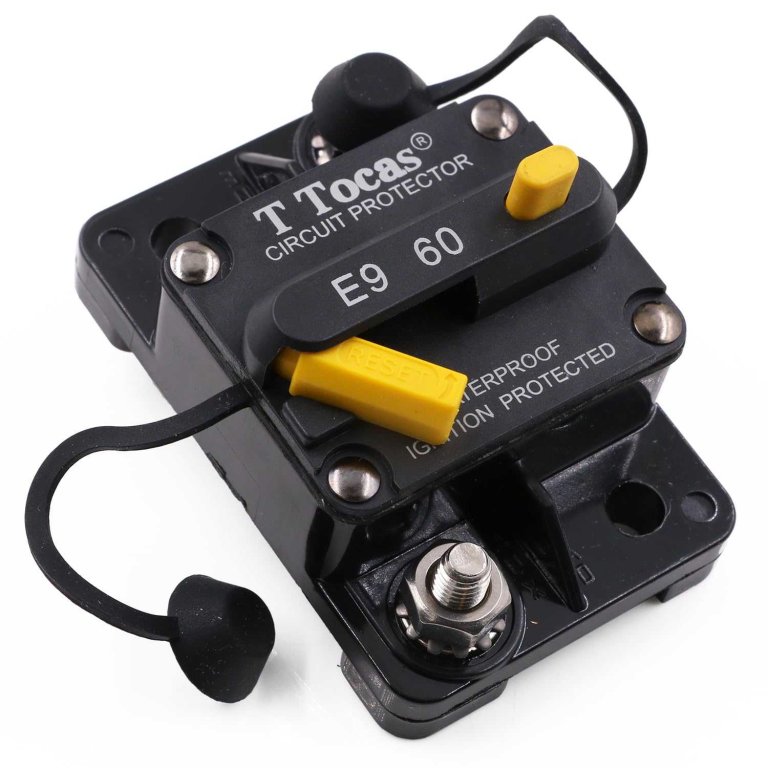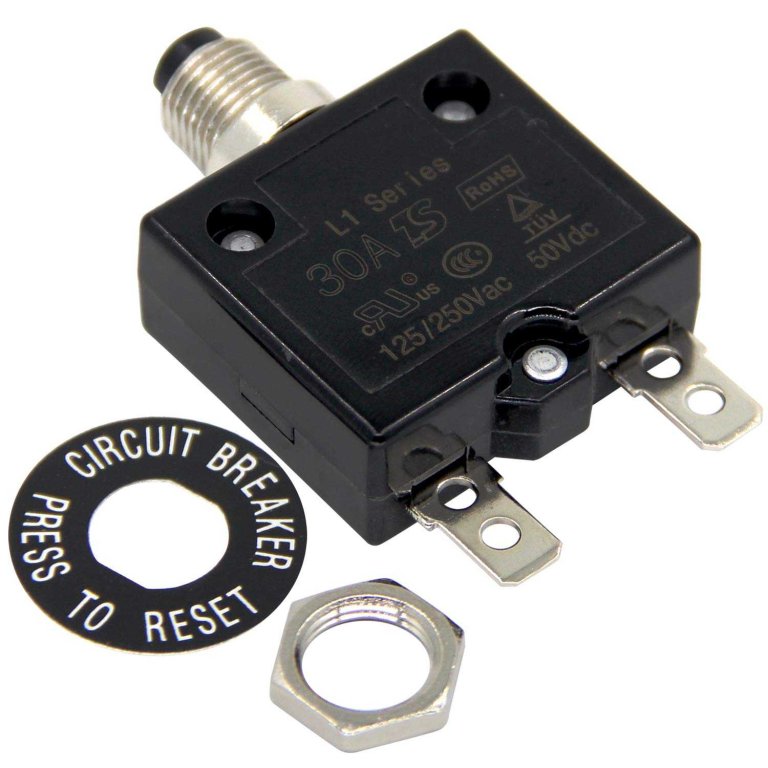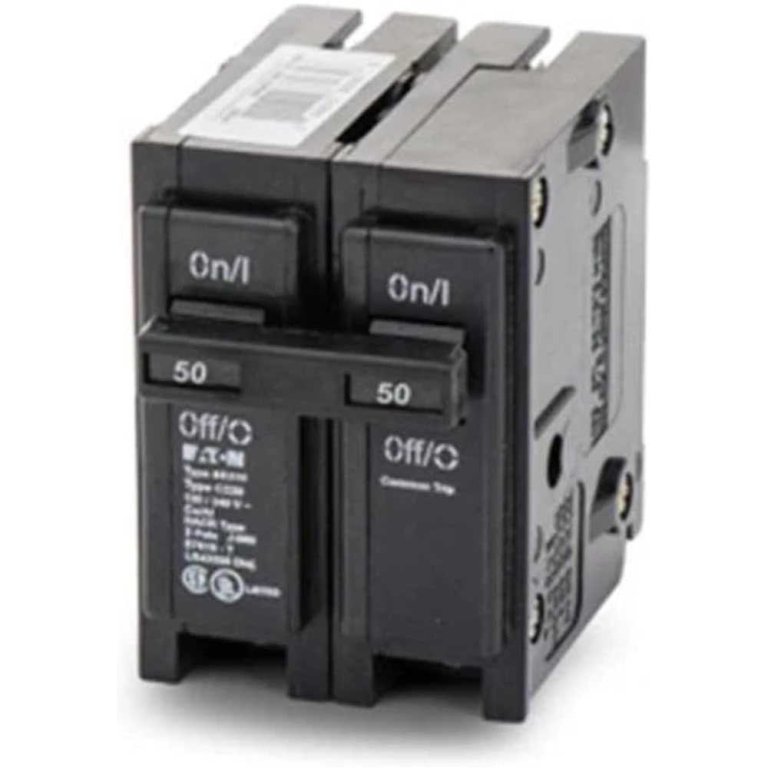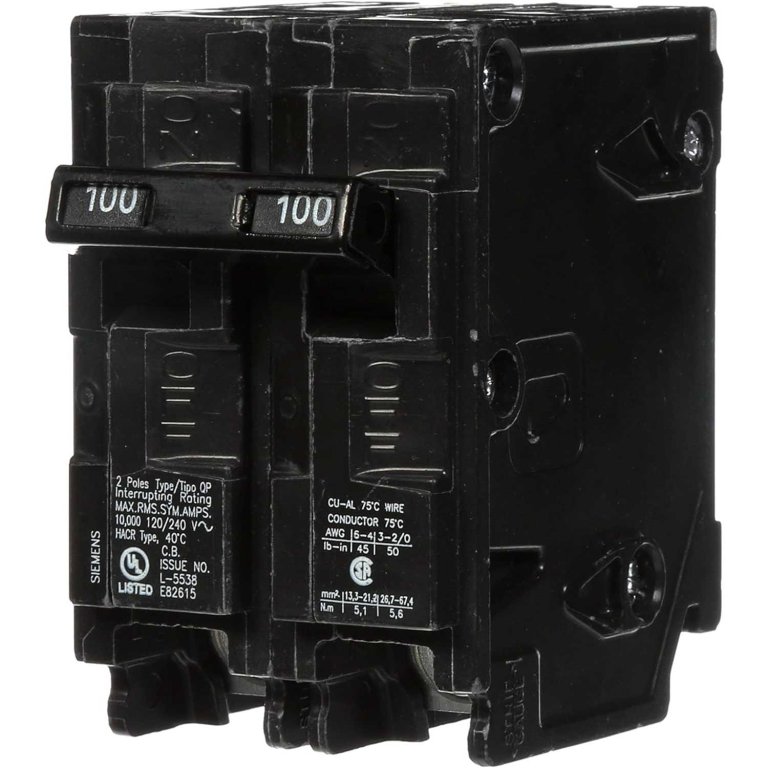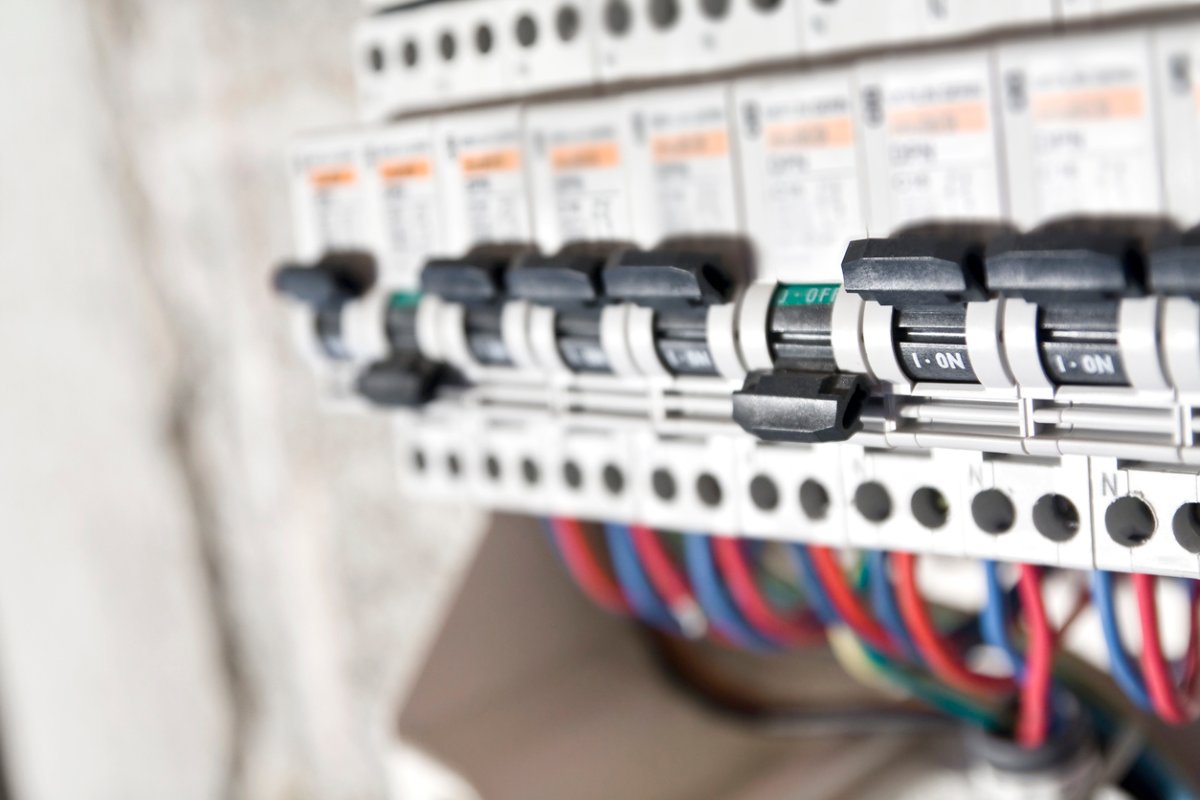
We may earn revenue from the products available on this page and participate in affiliate programs. Learn More ›
Circuit breakers are a vital safety feature in any electrical system. Almost any fault will cause the breaker to trip, instantly cutting off the flow of electricity. This action can prevent fires and potentially lethal shocks. While replacing circuit breakers is relatively straightforward in most cases, shoppers might find it challenging to select a reliable, high-quality device appropriate for the situation.
After exploring more than 60 circuit breaker types and sizes and consulting with master electrician Adam Nelson, co-owner of Young Cardinal Electric in Wesley Chapel, Florida, we have the information you need to make a solid decision. This guide also includes a carefully researched list of some of the best circuit breakers for just about every eventuality.
- BEST OVERALL: Square D 20 Amp Single-Pole Circuit Breaker
- BEST BANG FOR THE BUCK: Siemens 20 Amp Single-Pole Circuit Breaker
- BEST DUAL-FUNCTION: Square D 20 Amp Dual-Function Circuit Breaker
- BEST DOUBLE-POLE: Siemens 30 Amp Double-Pole Circuit Breaker
- BEST FOR MARINE USE: Red Wolf 60 Amp Marine Circuit Breaker
- BEST FOR SOLAR SYSTEMS: Chtaixi 63 Amp Isolator for PV Systems
- BEST FOR RV USE: T Tocas 60 Amp Surface Mount Circuit Breaker
- BEST FOR COMMERCIAL USE: Rkurck 30 Amp Push-Button Circuit Breaker
- BEST 50A: Eaton 50A 2-Pole Circuit Breaker
- BEST 100A: Siemens 100 Amp Double-Pole Circuit Breaker

How We Chose the Best Circuit Breakers
Circuit breakers sit inside the main electrical panel, and you shouldn’t need to check them unless there’s a problem, making reliability a key feature for the best circuit breakers on the market. Cheap models that go bad are tremendously frustrating, and—luckily—high-quality circuit breakers are not expensive. All of our picks in this guide are brands that may not be household names but are known and trusted within the industry.
First, we checked building codes and technical requirements to ensure our selections complied with the latest regulations. Next, we wanted to offer as much variety as possible, so in addition to common 20 amp breakers, this guide includes high-capacity options and circuit breakers for RV and marine use.
Nelson echoes the advice of many: “DIYers need to ensure they know the amperage rating on the circuit breaker. If you install a higher amperage breaker, you run the risk of drawing a higher amperage than the wire is rated for—leading to the potential safety risks.”
Nelson also warns of another potential hazard: “Don’t make the mistake of upping to a higher amperage circuit breaker in scenarios where the circuit breaker is tripping constantly.” A common fault is an overload when a user plugs too many appliances into the same outlet. Upping the breaker amps to prevent tripping can lead to devices burning out and a potential fire.
We have not included smart circuit breakers in this guide. While they do allow monitoring of individual circuits, they are comparatively expensive. There are also concerns about Wi-Fi security and whether breakers might malfunction if the Wi-Fi goes down.
Our Top Picks
These top picks feature a comprehensive range of the best circuit breakers for residential, commercial, RV, and marine installations.
Best Overall
Square D 20 Amp Single-Pole Circuit Breaker
Pros
- High-quality device from one of the world’s best-known electrical brands
- Suitable for both residential and commercial use in indoor and outdoor service panels
- Manufacture involves no toxic heavy metals or use of mercury
Cons
- Complaints are rare, but some customers note receiving nonfunctional units
Product Specs
- Current rating: 20 amp (A)
- Voltage: 120/240 volt (V)
- Interrupting capacity: 10 kiloamp (kA) (10,000A)
With so many different circuit breaker types and a host of potential uses, choosing a single best circuit breaker is a challenge. However, while our research revealed that many older homes have 15 amp breakers, a 20A model is the most common circuit breaker in use today. We awarded the Square D circuit breaker our top pick because of the manufacturer’s reputation for reliable, durable equipment at affordable prices.
This is a single-pole breaker that takes one slot in the breaker box—also called a service panel or load center. In the home, you will most commonly use this breaker on lighting circuits and standard power outlets. It is also for use in Combination Service Entrance Devices (CSEDs) found inside or outside apartments or commercial premises. Square D is keen to stress its environmental practices, and users can recycle this 20A circuit breaker without special requirements.
Get the Square D 20A circuit breaker at Amazon or The Home Depot.
Best Bang For The Buck
Siemens 20 Amp Single-Pole Circuit Breaker
Pros
- A reliable, durable device from a leading brand at a very competitive price
- Easy plug-in mounting with Insta-wire connectors for rapid installation
- For use in both single-phase and 3-phase service panels
Cons
- Complaints are rare, but a few buyers note receiving used devices
Product Specs
- Current rating: 20A
- Voltage: 120V
- Interrupting capacity: 10kA
The Siemens 20A circuit breaker is a direct competitor to the abovementioned Square D model, and—like the Square D—comes from a brand with an excellent reputation for product quality. The performance and usage of these two products are very similar, including the same high levels of protection against short circuits and overloads. However, Siemens does not recommend its breaker for 240V circuits, although it is safe for use for both single- and three-phase installations in home and commercial service panels.
Like the Square D model, this Siemens 20A breaker is very competitively priced, and the Square D breaker may even be cheaper, depending on the retailer. Ultimately, both products are excellent, so the choice will probably come down to load center compatibility. This is an important consideration as they are not interchangeable.
Get the Siemens 20A circuit breaker at Amazon, Lowe’s, or The Home Depot.
Best Dual-Function
Square D 20 Amp Dual-Function Circuit Breaker
Pros
- Offers the arc-fault circuit interrupter (AFCI) and ground-fault circuit interrupter (GFCI) protection demanded by the National Electrical Code (NEC)
- Plug-in or plug-on simplified connection for faster, easier installation
- For use in household breaker boxes, plus residential and commercial CSEDs
Cons
- Considerably more expensive than standard breakers
- Can be prone to unexpected tripping
Product Specs
- Current rating: 20A
- Voltage: 120V
- Interrupting capacity: 10kA
To understand the value of a dual-function breaker, we need to provide a brief explanation of AFCI and GFCI protection.
NEC now demands that owners of all new homes are installing circuit breakers with AFCI. Slightly confusingly, Square D uses the acronym CAFI (for Combined Arc Fault Interrupters), but it’s the same concept. Arc faults are high-power discharges that can cause fires, so AFCI breakers are intended to prevent these disasters from happening.
GFCIs are ground-fault circuit interrupters. Faulty wiring or equipment can cause a ground fault, which can be particularly lethal if moisture is present. GFCIs are often fitted in bathroom circuits or in sockets where garden equipment is plugged in. While GFCIs are not currently a legal requirement, they are an important safety device.
The Square D 20A dual-function circuit breaker is essentially the same product as our top pick but with these additional features. Along with use in new builds, this circuit breaker can function as a replacement that increases household safety.
Get the Square D dual-function circuit breaker at Amazon, Lowe’s, or The Home Depot.
Best Double-Pole
Siemens 30 Amp Double-Pole Circuit Breaker
Pros
- High-quality device to supply the power demands of appliances like dryers and air conditioners
- Suitable for both 120V and 240V use in single- or 3-phase load centers
- Insta-wire feature allows for quicker and easier installation
Cons
- Although usually reliable, a few buyers report defects in one of the poles
Product Specs
- Current rating: 30A
- Voltage: 120/240V
- Interrupting capacity: 10kA
Double-pole circuit breakers are normally for use with circuits that require a 240V supply. Delivering that power requires two positions (slots) in the breaker box, hence the term “double.”
This 30A version from Siemens is another high-quality device that features the brand’s Insta-wire connectors for faster installation. It is suitable for both home and commercial electrical systems. The circuit breaker is heating/air conditioning/refrigeration (HACR) rated—meaning it can handle sudden power surges—and typically for use with air conditioners, dryers, and water heaters.
In some circumstances, such as an emergency when a single-pole replacement isn’t available, you could use a double-pole breaker to replace a single-pole breaker provided there is sufficient physical space. Just one side (one pole) would be wired.
Get the Siemens 30A circuit breaker at Amazon, The Home Depot, or Walmart.
Best For Marine Use
Red Wolf 60 Amp Marine Circuit Breaker
Pros
- Tough, phenolic resin body and waterproof cover suitable for freshwater and marine applications
- Push-button reset can act as a kill switch to isolate the battery
- Also for use with a wide variety of road vehicles
Cons
- Some customers note unexpected tripping or overheating
Product Specs
- Current rating: 60A
- Voltage: 12V to 48V
- Interrupting capacity: Not stated
The Red Wolf 60A marine circuit breaker is designed for harsh environments. The durable body is made from phenolic resin (the same material used to make billiard balls). This body is highly resistant to salt water, and a waterproof cover serves to protect metal connections.
Users can flush mount the circuit breaker wherever required, and it protects trolling motors and other electrical devices from power spikes. This model works as both an automatic and a manual breaker, the latter meaning you can use it as a kill switch to isolate the power source. It also means you can charge a battery without needing to remove it. Red Wolf 60A circuit breakers are equally suitable as automotive circuit breakers for private and commercial vehicles and can protect accessories like high-end audio systems.
Get the Red Wolf circuit breaker at Amazon or Walmart.
Best For Solar Systems
Chtaixi 63 Amp Isolator for PV Systems
Pros
- Compact, high-quality breaker designed specifically for direct-current (DC) circuits like solar systems
- Thermal magnetic trip combats arc problems associated with DC supply
- Easy-to-fit model with a simple screw attachment to breaker rail and clear polarity markings
Cons
- Some customers note wire clamps or rail screws not tightening properly
Product Specs
- Current rating: 63A
- Voltage: Up to 1,000V
- Interrupting capacity: Not stated
Photovoltaic systems (PV) gather DC from solar panels. An inverter then converts the DC to alternating current (AC) for use in the home. There is the same potential for overload and short-circuit on the DC end as any other electrical system, except DC offers the potential for an additional hazard. In the event of the breaker tripping, an arc (spark) can jump across the contacts as they open, which could cause component damage or even a fire.
While standard AC electrical breakers can’t handle this arc, the Chtaixi DC circuit breaker can. It uses a thermal-magnetic trip to perform what is called “arc extinguishing,” thus safely discharging the charge. Visually, this model looks much like many other double-pole circuit breakers, although the Chtaixi is not for use on AC systems.
Get the Chtaixi circuit breaker at Amazon.
Best For RV Use
T Tocas 60 Amp Surface Mount Circuit Breaker
Pros
- Versatile automotive circuit breaker for use in RVs, trucks, and trailers
- Ignition protected makes it safe for mounting in fuel tank spaces
- Simple reset plus kill switch to isolate the battery
- Waterproof for marine use
Cons
- A few customers note the product has been nonfunctional on receipt
Product Specs
- Current rating: 60A
- Voltage: 12V to 48V
- Interrupting capacity: Up to 2,500A
The T Tocas automotive circuit breaker is designed to protect vehicle circuits using 12V to 48V batteries. This feature makes the breaker ideal for RVs, trucks, and trailers. It requires just two holes for surface mounting and is compact enough to fit in relatively small spaces.
The unit itself is durable, heat-resistant to 180 degrees Fahrenheit, and frost-resistant to -25 degrees Fahrenheit. It is also waterproof to the international IP67 standard, rated for heavy-duty use under SAE J1625, and has ignition protection that meets SAE J1171 and UL1500 (Underwriters Laboratories) requirements. This means the breaker is safe to use in fuel tank compartments in road and marine environments and will not ignite combustible air and fuel mixtures. In addition to an automatic reset, it has a push-button battery isolator.
Get the T Tocas circuit breaker at Amazon or Walmart.
Best For Commercial Use
Rkurck 30 Amp Push-Button Circuit Breaker
Pros
- Space-saving single-pole breaker can replace a double-pole version in high-power circuits
- Wide temperature range makes it suitable for telecommunications, transportation, marine, and other commercial uses
- Works with AC and DC circuits, offering a simple push-button reset
Cons
- No trip indication
- Low interrupting capacity
- Not compatible with many household breaker boxes
Product Specs
- Current rating: 30A
- Voltage: 125V to 250V or 50V DC
- Interrupting capacity: 1kA (1,000A)
In situations where load center space is at a premium, the Rkurck push-button circuit breaker offers an effective solution. It operates in the same way as a double-pole 30A breaker but with a single-pole width. This feature makes the breaker popular in commercial installations where more circuits will likely be 240V.
The Rkurck breaker can be fitted in AC and DC electrical circuits, so it is suitable for a variety of industrial, transportation, and marine uses. The operating range is from 14 degrees Fahrenheit to 140 degrees Fahrenheit. Fitting is straightforward, and the push-button reset is quick and easy. However, unlike switch- or lever-type breakers, there is no visual indication when this breaker is tripped. If tracing the fault proves difficult, it may be worth investing in a circuit breaker finder.
Get the Rkurck circuit breaker at Amazon.
Best 50A
Eaton 50A 2-Pole Circuit Breaker
Pros
- Reliable, durable product from a brand renowned for high-quality electrical devices
- Suits commercial, industrial, and residential use for high-consumption devices like ovens and HVAC
- Wider compatibility than many comparable models, and suitable for Bryant, Challenger, and Westinghouse load centers
Cons
- Some customers note poor packaging that resulted in damaged products
Product Specs
- Current rating: 50A
- Voltage: 120V/240V
- Interrupting capacity: 10kA
Eaton is a company that traces its history well over 100 years. Few brands in the industry have more experience, and its electrical products are renowned for quality, durability, and reliability.
The Eaton 50A circuit breaker is a double-pole device designed for protecting high-consumption appliances in the home, such as ovens and HVAC systems. It also has numerous commercial and industrial applications. Plug-on mounting makes this breaker easy to fit, and—in addition to Eaton’s own load centers—it is compatible with Bryant, Challenger, and Westinghouse models. Unlike many rivals that only have “on” and “off” positions, the Eaton 50A circuit breaker trips to the middle, providing a clear indication that a fault has occurred rather than just being turned off.
Get the Eaton circuit breaker at Amazon, The Home Depot, or Walmart.
Best 100A
Siemens 100 Amp Double-Pole Circuit Breaker
Pros
- Efficient, high-capacity breaker from one of the industry’s most trusted brands
- Designed for heavy-demand home appliances like furnaces and many commercial applications
- Insta-wire connectors ensure quick and easy fit
Cons
- An occasional customer notes that 1 or both poles have been faulty
Product Specs
- Current rating: 100A
- Voltage: 120V/240V
- Interrupting capacity: 10kA
Many homes may never need a 100A circuit breaker, but if they do, this model from Siemens is a durable and reliable option. It is intended to protect high-demand equipment like electric furnaces and range cookers. Although a 50A fuse is often sufficient, very powerful appliances can require 80A or more.
The Siemens 100A double-pole circuit breaker is also suitable for industrial equipment like high-volume air compressors and any commercial installation with high-consumption machinery. Despite the elevated performance, it is as quick and easy to fit as any Siemens breaker, thanks to the Insta-wire connections.
Get the Siemens 100A circuit breaker at Amazon, Lowe’s, or The Home Depot.
Jump to Our Top Picks

What to Consider When Choosing a Circuit Breaker
Oil capacity and rating are the primary considerations when choosing the best circuit breakers. Capacity and rating are somewhat interchangeable, which can lead to confusion. It’s important to understand the impact that amps and volts will have on your choice, which we explain in detail below.
It’s worth noting that electric events like lightning strikes can bypass circuit breakers, and thus have the potential to cause serious damage. Read more about how to protect against this occurrence in our guide on whole-house surge protectors.
Capacity
Capacity usually refers to amps, and specifically the number of amps that can flow through the circuit breaker before it trips. For example, the outlets in a bedroom will usually be 15A or 20A since users typically operate only low-powered electrical devices in that location. In a kitchen or laundry room, the outlets might be 20A for a mixer or a coffee maker and 30A for an oven. Several outlets can be linked to the same breaker, but some outlets—like for an oven or HVAC—will usually have a dedicated breaker.
Capacity can also refer to Interrupt Capacity, which can also be called Ampere Interrupting Capacity (AIC) or Maximum Interrupting Capacity (MIC). This is the maximum amps the circuit breaker can handle without failing. Above this limit, it could short out or weld closed because of the heat generated. For household breakers, this limit is usually 10,000A. As most home electric supply is under 400A, the level of protection is considerably higher than you would ever need.
Rating
Amp capacity is sometimes called amp rating or amperage rating. More often, the term refers to voltage (volts). Residential and small business installations usually use low-voltage circuit breakers. Most are capable of handling around 600V. As household circuits rarely exceed 240V, these are perfectly safe. Low-voltage breakers are usually rated as 120V only (sometimes 110V) or as both 120V and 240V (possibly 110V and 220V).
Medium-voltage circuit breakers are used in apartment blocks, large commercial premises, and factories. These breakers may be capable of handling up to 72,000V. High-voltage circuit breakers are usually power line devices and can handle up to 800,000V.
Frequency and Other Considerations
Frequency is given in Hertz (Hz) and describes the number of times the AC fluctuates per second. In complex commercial installations, frequency can be an important factor; however, household frequency is always 50Hz or 60Hz, and the associated circuit breakers are set accordingly.
Compatibility is another key issue, as not all manufacturers’ circuit breakers fit other manufacturers’ breaker boxes. Sometimes this is due to physical size, and sometimes it’s just how they fit. Some breakers clip to a rail, whereas others need to be screwed in. You’ll also find that some circuit breakers have a reset switch while others have a push button. In theory, resetting a push button is slightly faster than a circuit breaker switch. However, the difference is minimal, and as the type generally depends on the kind of installation, there is seldom any choice.
FAQs
In this guide, we’ve taken an in-depth look at how circuit breakers work and identified which features to consider when choosing the best circuit breaker for a particular application. While it will certainly have answered many questions, a few common queries that we haven’t addressed are answered here.
Generally speaking, circuit breakers will provide many years of trouble-free service, but they can go bad. Outlets that get hot or make a crackling sound may indicate a breaker fault. A circuit breaker tracer could help locate the problem, but there may be other causes. The safest course is to call a qualified electrician to identify and resolve the problem.
Circuit breakers will trip repeatedly if there is a short circuit or ground fault. It will also happen in overload situations when an electrical device draws more current than the circuit breaker can handle. Again, call a professional to identify and resolve the issue.
Install a circuit breaker panel in a location that is relatively easy to access because you want to reset a breaker quickly if it trips. Utility rooms, garages, and basements are popular spots. Don’t install a circuit breaker panel in a closet or any other location that houses flammable materials like paper or clothing.
